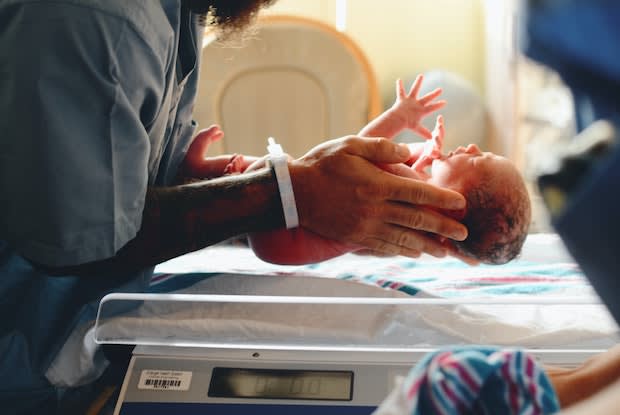Table of Contents
I. Why Do Women Experience Depression More Often?
II. Premenstrual Dysphoric Disorder
V. Perimenopause and Menopause
Why Do Women Experience Depression More Often?
Anyone can experience depression, but women are twice as likely to be diagnosed with this disease in their lifetime. Scientists believe this is likely due to fluctuating hormones that women experience throughout their lives. Hormonal changes may contribute to mood changes, but they are not responsible for depression entirely. A combination of inherited traits, life circumstances, biological factors, and personality traits can contribute to the development of depression. [1]
Around 12 million women in the United States suffer from clinical depression every year. Depression is most common in women between the ages of 25 and 44. You can experience several types of depression, but women are more likely to experience depression associated with pregnancy, menopause, and menstruation. Medications like Effexor XR, Prozac (fluoxetine), and Paxil (paroxetine) can help treat these symptoms in women. [2]
Premenstrual Dysphoric Disorder
The brain has many receptors for estrogen, progesterone, and other sex hormones. These hormones can significantly impact the way neurotransmitters in the brain influence mood and thinking, and they may trigger symptoms of premenstrual dysphoric disorder (PMDD). Experiencing emotional and physical discomfort is common for women experiencing premenstrual symptoms, but these symptoms can be severe for some women.
Around five percent of women of childbearing age experience severe premenstrual symptoms. These severe symptoms can impact everyday activities and interfere with school, relationships, and professional life. Menstrual symptoms are often dismissed, but PMDD can lead to a lot of disruptions in a woman’s life, and around 15 percent of women with this disorder attempt suicide. [2]
Risk factors for PMDD vary woman to woman, but you are at an increased risk if your mother or a close relative has also experienced PMDD. Other risk factors may include stress, being overweight or obese, and a history of trauma or abuse. [2]
Typically, you must experience at least five of the following symptoms to be diagnosed with PMDD. These symptoms can interfere with work and relationships and have to occur for at least two menstrual cycles before diagnosis. Symptoms may include: Most people have heard of postpartum depression, but depression is also common during pregnancy. Depression during pregnancy is referred to as perinatal depression. Many women feel lots of highs and lows during pregnancy, which can mask symptoms of depression. Studies show that 80 percent of women experience the “baby blues” during pregnancy. This may occur due to increased levels of estrogen and progesterone in the body. These hormones are needed to expand the uterus and keep the placenta healthy during pregnancy. It is estimated that between 10 and 20 percent of women develop pregnancy-related mood disorders. Around one in 20 women will experience a major depressive disorder during pregnancy. [3] It may be difficult to recognize depression during pregnancy, so it is essential to be aware of any out-of-character symptoms. If you experienced depression before pregnancy, you might be more likely to develop depression during pregnancy. You should talk to your doctor if you experience the following symptoms: A mother's hormone levels plummet once she gives birth and this crash can contribute to postpartum depression. You may experience baby blues for one to two weeks after birth, but mood changes typically begin to subside after that. If you are experiencing the baby blues, you may feel: These feelings are generally normal for new mothers, but if they persist for months or even years, you may be experiencing postpartum depression. This is a serious medical condition that occurs in about 10 to 15 percent of women. Some women may feel like “bad” mothers if they feel irritable or depressed, but there is no need to feel ashamed. This is a fairly common disorder, and women should not be afraid to address any mood changes with their doctor. These feelings may be spurred on by several things like breastfeeding problems, infant complications, and poor social support. [1] Postpartum depression can look different in many women, but some common symptoms can include: The risk of depression goes up again once a woman begins experiencing menopausal symptoms. Menopause occurs when a woman is no longer able to have children. This occurs because the female body stops producing as much estrogen, which leads to unpleasant symptoms, like vaginal dryness and mood swings. Perimenopause means “around menopause” and refers to the transition time before menopause as hormone levels begin to shift. These fluctuations of hormones during perimenopause and menopause can increase the risk of depression. It is important to note that women may experience depression as a symptom of a life-changing event or situation, which differs from clinical depression, which requires more rigorous treatment because of chemical imbalances in the brain. Mood swings are common during perimenopause and full menopause. If women have already experienced a depressive episode, they are more likely to have depressive symptoms during menopause. [4] If you are experiencing noticeable mood changes, it is best to contact your doctor. Symptoms may include: If a woman is affected by PMDD, menopause, perimenopause, or postpartum depression, they may be prescribed medications to improve symptoms. Selective serotonin reuptake inhibitors (SSRIs) like Prozac (fluoxetine) can delay serotonin's uptake in the brain, contributing to a positive mood. Studies report that 60 to 90 percent of women with PMDD respond positively to drugs that block serotonin's reuptake. Other drugs like Effexor XR and Paxil (paroxetine) can also help anxiety symptoms, helping women, new mothers, especially, regulate their mood, and feel better in their everyday lives. [2] Medications can help severe symptoms, but seeking out support groups and keeping open contact with your partner can also help with depression symptoms. No benefits can come from keeping your feelings bottled up inside, so seeking a professional can help you talk out your feelings and create healthy coping mechanisms. [2] The content in this article is intended for informational purposes only. This website does not provide medical advice. In all circumstances, you should always seek the advice of your physician and/or other qualified health professionals(s) for drug, medical condition, or treatment advice. The content provided on this website is not a substitute for professional medical advice, diagnosis or treatment.
a. Symptoms
Perinatal Depression
a. Symptoms
Postpartum Depression

a. Symptoms
Perimenopause and Menopause

a. Symptoms
Treatment
